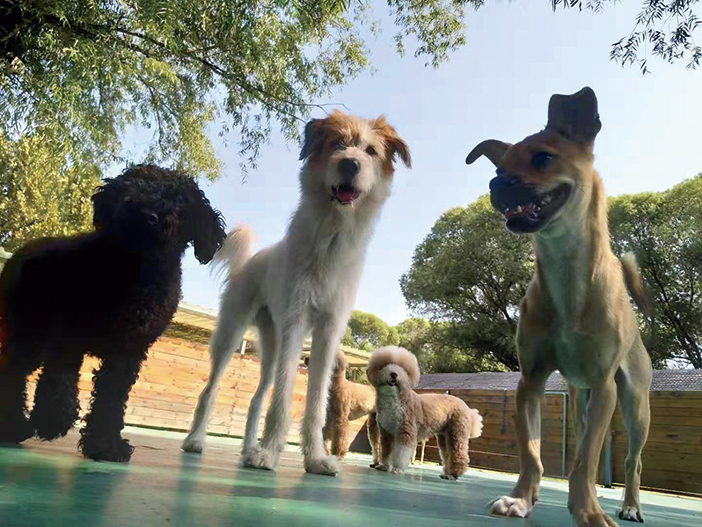The kitten is tiny, white, sad, probably eight weeks old or less. My boyfriend Max and I see it running across the road, and by the time it reaches our side, it has been hit by a vehicle. It is bleeding and its back legs aren’t working.
I wait by the kitten, while my boyfriend runs up to our apartment to get a towel and a box. Panicking, I get on my phone and start messaging people. Unfortunately, I only have a few contacts in the animal rescue world, and I have no idea how to find a vet in China. I don’t hear back from anybody. I call my Chinese friends, asking for help.
Max comes back, towel and box in hand. I make my first mistake of the rescue and the kitten bites my finger. The bite didn’t hurt but I should have been more careful and not put myself at risk. Max throws the towel over the kitten and scoops it into the box. It is in poor shape.
My phone pings; my roommate sends me an address for a nearby vet. Max calls a taxi. We arrive at the address and find nothing there. It is just a training school for people working with large domesticated animals. I am crushed. The kitten is still moving so we rush to find another address. My phone pings again, Max waves down a cab, we go off again.
The cab pulls over, we look around. It is just a pet store. Max is irritated, I am questioning why I ever came to China. Why are things so hard here? This should have been so straightforward. I get on my phone, I still haven’t heard from any rescuers, and my friends are not sure how to find a veterinarian. The kitten is still breathing. I take a deep breath. We ask someone on the street in very broken Chinese, are there any animal doctors nearby? He directs us down the road.
We walk for a long time in the heat. We try to go as fast as possible without jostling the kitten. Finally, we find a place with a dog and cat sign. We walk in and Max explains that we have an injured kitten. The man tries to be helpful but he is not equipped to do surgery. He explains this is a clinic and not a fully-fledged animal hospital.
With less care than I would have liked the man dumps the kitten onto a table. It mews and shakes while it bleeds. They tell me the spine is broken; even with surgery it probably wouldn’t walk again. It probably is diseased too. The man takes his time to write something on the computer in English. The outlook is bad. He explains the injuries, possible outcomes if I try to go to yet another place, and how he believes the best situation is euthanasia.
I sat in the waiting room feeling very alone as I cry over this poor little soul. I don’t know if I have other options. I have no support, I don’t yet speak Chinese, I don’t even know where in the city I am. We agree to euthanize the kitten. The vet sees how upset I am, and comforts me by telling me the kitten was in bad shape even before being hit by the car. The process is quick.
Max and I head home. I am angry and sad and tired. I am grateful Max is with me, but also angry with him. He is frustrated by all the running around we did, and I am furious I agreed to come to China with him in the first place. It is one of the hardest days I’ve faced in China and one of the loneliest.
The next day I go to the doctor. I realize that I have been bitten by a stray animal in a country where rabies is still a big problem. I need to get the shot within 36 hours of being bitten, and the sooner the better. Since I haven’t been vaccinated for rabies while in the US, I get the full round of the vaccination, which is five shots exactly one week apart, about RMB 90 each. For five weeks I am reminded of the little kitten I failed to save.
This incident took place last summer, and since then things have changed for me. I got more connected with animal rescuers, and now I even volunteer my time to rescuing and fostering dogs (and occasionally other critters – I had an injured crow for about a month!) But I don’t want anyone else to feel as lost as I did. China can be a difficult place to navigate and I hope the guide that follows can make it easier, so when you find that sad kitten on the road, you don’t have to go through the same thing I did.
SAFETY FIRST. Wear gloves or protect yourself with a thick towel or blanket to prevent getting bitten or spreading disease. If you are bitten, you must get to a hospital soon to start rabies vaccinations. Keep rescues away from healthy animals. There are many extremely contagious diseases that dogs and cats may carry, especially puppies and kittens. If you have animals at home that are not fully vaccinated, or if you aren’t 100 percent sure, then err on the side of caution and don’t allow the rescue animal near your pet. The younger the animal the higher the risk that they are carrying a disease like feline distemper or canine parvovirus. The latter kills many puppies before they can be vaccinated, can live in the environment for months, and is resistant to many disinfectants. Bleach does kill this virus, so always use bleach in these cases!
 First, ask yourself: Does it need to be rescued?
First, ask yourself: Does it need to be rescued?
This is important. If the animal has an injury, then yes! It needs help, skip straight to the next step. However, some of the strays around Beijing are pets that are allowed to roam, and you can be accused of stealing personal property. Do not take someone’s pet, even if you believe the animal is being abused. Many locals feed strays too, and they might be upset if the animal suddenly disappears, so make sure to speak with your neighbors to avoid any confusion. If you don’t speak Chinese, have a friend help you.
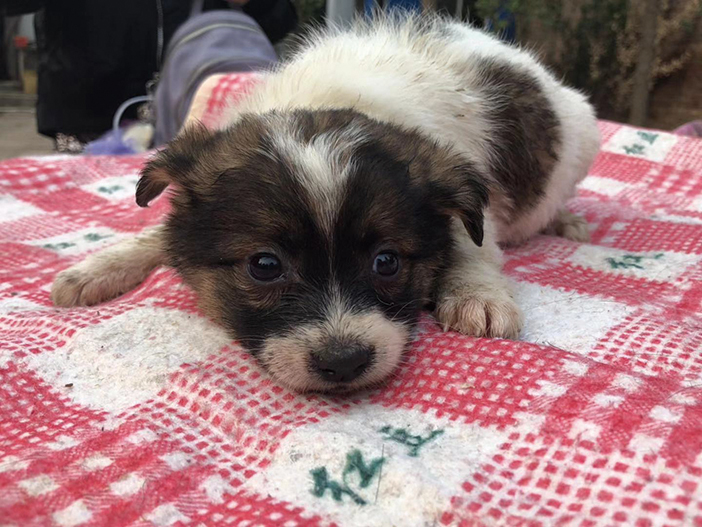 Consider Trap-Neuter-Return.
Consider Trap-Neuter-Return.
Adult strays are sometimes better off in a Trap-Neuter-Return/Release (TNR) program. This is especially true for adult feral cats. A feral animal refers to a domesticated animal that has never been accustomed to people and is very fearful. Cats that have never been around humans as kittens have a long road to becoming good pets, and many will never thrive as a pet. That is why TNR can be a great option when an animal is very fearful; it is the best way you can help cut back on stray animals in your neighborhood. Alleycat.org explains TNR this way: “In a Trap-Neuter-Return program, cats are trapped, brought to a veterinarian to be spayed or neutered, vaccinated, eartipped (the universal sign that a community cat has been neutered and vaccinated), and then returned to their outdoor home.” This limits strays, disease, and kittens, and these cats can live long and healthy lives outdoors. Just make sure to give them regular food and clean water.
If the animal is friendly, young, or injured continue with your rescue!
Make a relationship and capture.
If the rescue isn’t urgent, take the time to build trust. Feed and water the animal, give it some treats, and see if the animal will let you pet it. Don’t push a nervous animal – this is how people get bitten. For some strays building trust happens fast; all it takes is one yummy treat before it happily follows you home. For others, it can take weeks. The best thing to do is to figure out where the animal is living, because you also do not want to risk losing track of the critter. Use your best judgment to figure out how much time you can spare on this step.
Once you have built up a relationship, you need to capture it. If you are lucky, the animal will just follow you home, or you can lure it into a box or crate with some boiled chicken (this is one of the cheapest and yummiest treats for dogs or cats. Strays don’t always respond well to dry food.) If you can’t just scoop the animal up, perhaps because it is too scared or too big, then you will need to find someone with more experience in trapping and rescuing dogs.
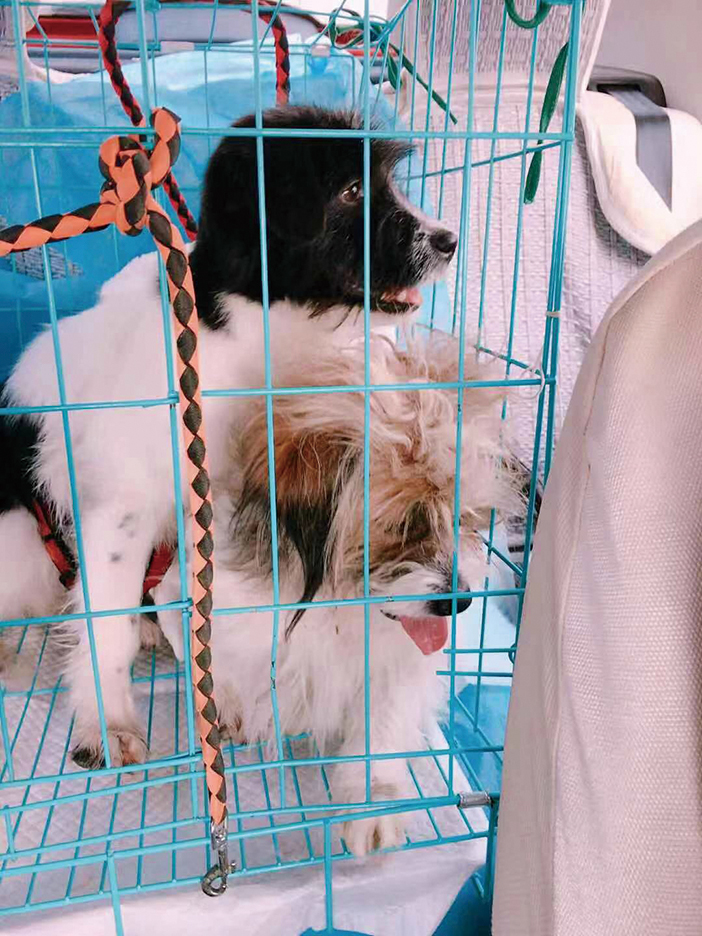 Get it to a vet!
Get it to a vet!
The vet should be your first stop. Call a Didi or use another transportation service. Didi and taxi drivers usually will take an animal if it is in a carrier. However they might insist that you put the animal in the trunk. This is not safe, so politely refuse and find another driver. This service called GOGOVAN will transport animals, and is especially good for large or crated dogs.
There are many vets around but finding a decent or a nearby one can be challenging. Make sure the vet has an Animals Rabies Vaccination Clinic Certification. It’s best to search Baidu maps or Amap for one of these terms “ 动物医院” pet hospital, “ 宠物诊所” pet clinics, “宠物之家” pet homes, to find your nearest veterinarian. I usually recommend PuppyTown “芭比堂动物医院” to rescuers, because they have locations all over the city, and have a discount for rescues! If the animal is injured, then obviously address that first. Once the rescue is healthier you need to start vaccinations, rabies shots, deworming, and flea and tick prevention. If the animal is healthy enough, schedule a spay or neuter surgery. It sounds like a lot but this is the easiest part! You can check out our article on going to the vet in China (p25) for more information.
If you are bringing an injured animal to the vet, you may have some tough choices to make. Get an idea of the scope of the problems and the costs. The hardest part is knowing when to continue with treatment, and when to think about euthanasia. Consider the quality of life for the animal. If the animal is going to be in pain for the rest of its life and the pain can’t be properly managed, euthanasia may be necessary. If it is a matter of losing a leg, paralysis, blindness… these are things animals can often live a happy life with, even if they may need more care. There are people happy to adopt an animal with special needs.
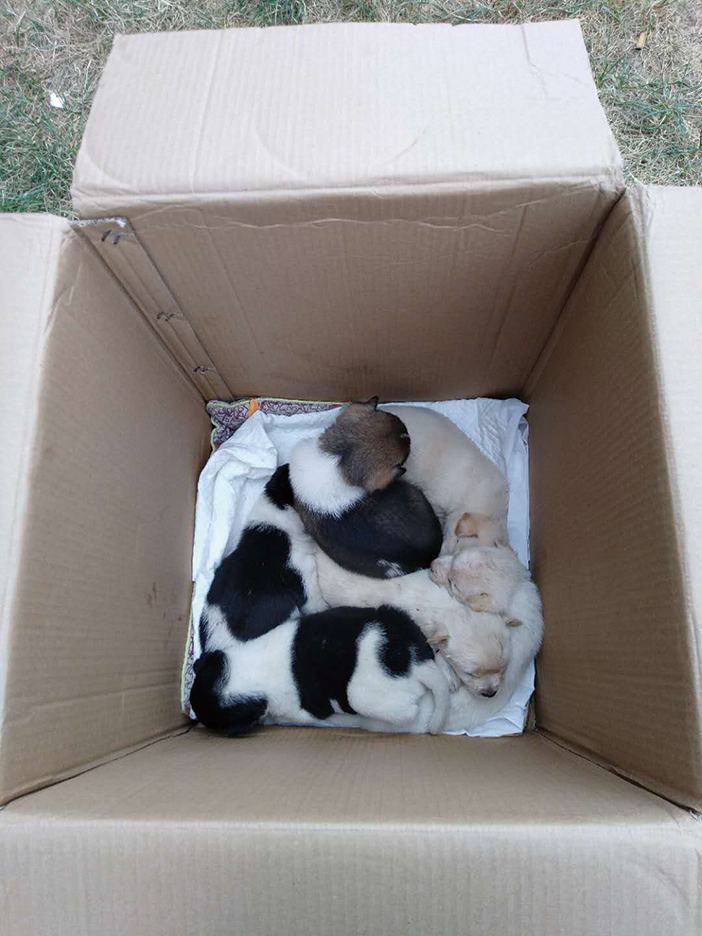 Covering cost and care.
Covering cost and care.
Get an idea of the cost, and then start fundraising if you can’t cover the costs on your own. There are many WeChat communities where you can post asking for help and donations for rescues. I suggest making a poster with the animal’s photos, the care needed, and estimated cost. I use an app called Pic Collage. Make sure to keep receipts; people are much more willing to donate when they know exactly where their money is going.
After the vet has given your rescue the all-clear, and it’s ready to be a pet. If you can’t personally adopt or foster the animal, you’ll need to find someone who can. The same WeChat rescue groups that you can fundraise in are also a great place to start looking for a foster (short term) and then an adopter (long term). While you are looking for someone to care for your rescue, you can board them. There are many cheap boarding options. Make sure your choice will quarantine unvaccinated animals, and allows for walks and potty breaks throughout the day. Take time to make sure your rescue is going to a safe place and a safe home once you find an adopter.
Consider asking these questions of a potential adopter: how long are you staying in China (if they’re foreign)? If you move or leave the country are you willing to take your pet with you? Some countries are harder than others to bring pets into, so check relevant laws. How much free time do you have? How are you planning on training the dog or cat?
That’s it. Once you get started, you won’t be able to stop. Be careful before you end up with multiple dogs, cats, birds, and turtles in your tiny Beijing apartment.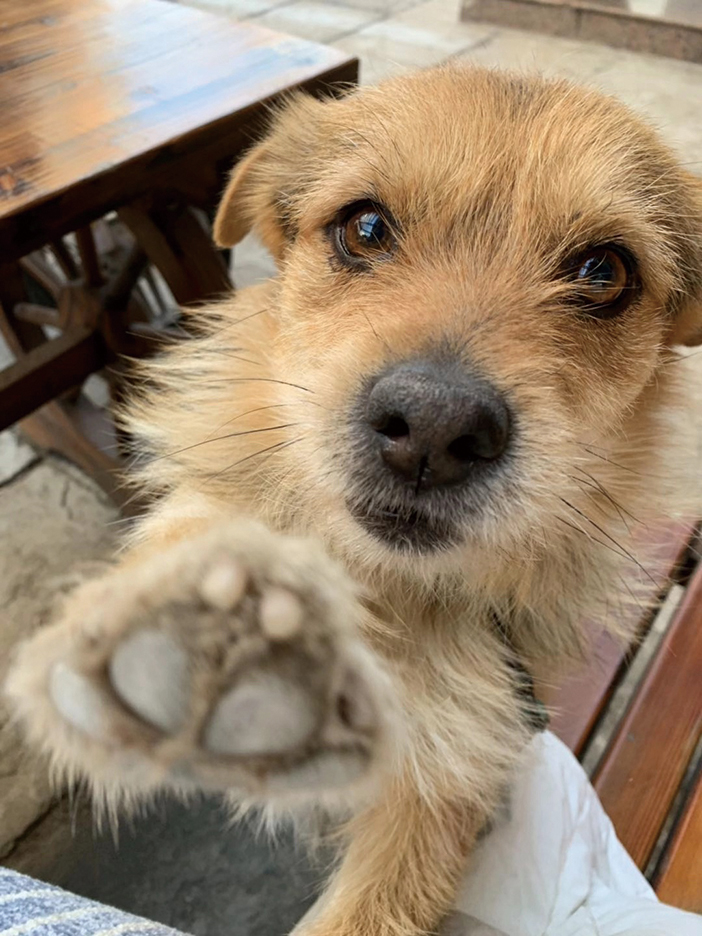
Here are a few great organizations that are willing to help you. Many of the rescue organizations are volunteer-run and are very full; please contact them to see if they have any space.
Lost Puppies: Foster, adoption, fundraising; requires a two week quarantine period before adding animals to their network. (Lostpuppies.cn)
Together for Animals in China (TAC): Private dog shelter. (138 0119 2990, xiaoli@togethertac.org)
Kiki Boarding: Cheap, reliable boarding. (WeChat:
kevinhome2008)PJ Canine Chateau: Cageless boarding for dogs. (WeChat: 135 8185 1516, bookings@chateauk9.wang)

This article appeared in the beijingkids October 2019 Family Foodies issue


